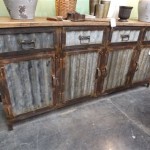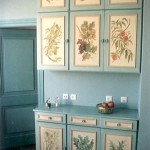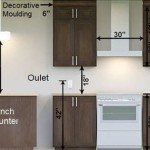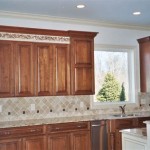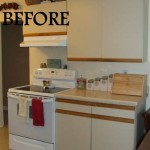Sample Colors For Painting Kitchen Cabinets: A Comprehensive Guide
Selecting the right color for kitchen cabinets is a crucial decision that significantly impacts the overall aesthetic and ambiance of a home. The kitchen often serves as the heart of a household, and the color of its cabinets plays a vital role in establishing its style, mood, and functionality. This article delves into the diverse range of sample colors available for painting kitchen cabinets, providing insights into current trends, classic choices, factors influencing color selection, and tips for testing and evaluating colors before committing to a full-scale painting project.
Understanding Color Psychology and Its Impact on Kitchen Design
Color psychology posits that colors evoke specific emotions and influence human behavior. In the context of kitchen design, understanding these psychological associations can help homeowners create a space that aligns with their desired atmosphere. For instance, cool colors like blues and greens are often associated with tranquility and calmness, making them suitable for creating a relaxing and refreshing kitchen environment. Conversely, warm colors such as reds, oranges, and yellows can stimulate appetite and energy, potentially making them ideal for bustling kitchens where socializing and cooking take center stage.
Neutral colors, including whites, grays, and beiges, offer versatility and adaptability. They serve as a blank canvas that allows for the integration of various design elements and accent colors. White cabinets, for example, can create a bright and airy feel, making smaller kitchens appear more spacious. Gray cabinets, on the other hand, can lend a touch of sophistication and modernity. The psychological impact of color should be a primary consideration when selecting sample colors for kitchen cabinets.
Exploring Popular Color Trends for Kitchen Cabinets
Kitchen cabinet color trends are constantly evolving, influenced by broader design movements and shifts in consumer preferences. While classic colors retain their enduring appeal, new and innovative hues emerge to cater to diverse tastes. Current trends encompass a wide spectrum of options, ranging from subtle and understated tones to bold and statement-making choices.
Neutral Grays and Greiges: Grays and greiges (a blend of gray and beige) remain popular choices for kitchen cabinets due to their versatility. They complement a variety of countertop materials, backsplashes, and flooring options. Lighter grays can create a bright and contemporary look, while darker grays offer a more dramatic and sophisticated feel. The adaptability of gray makes it a safe yet stylish choice for many homeowners.
Classic Whites and Off-Whites: White cabinets continue to be a timeless option, associated with cleanliness, brightness, and spaciousness. Different shades of white, ranging from crisp bright white to warmer off-whites, offer subtle variations to accommodate different lighting conditions and aesthetic preferences. Off-whites, such as cream or ivory, can add warmth and depth to a kitchen, particularly in spaces with abundant natural light.
Nature-Inspired Greens and Blues: Colors inspired by nature, such as greens and blues, are gaining traction in kitchen design. Soft sage greens and muted blues can create a calming and serene atmosphere, connecting the kitchen to the outdoors. These colors work well in kitchens with natural wood accents and earthy materials. A connection with nature is increasingly valued in home design.
Bold and Statement Colors: For homeowners seeking a more daring aesthetic, bold colors such as deep blues, emerald greens, or even dark charcoals can make a striking statement. These colors are often used in larger kitchens or as accent colors on kitchen islands or lower cabinets. Careful consideration should be given to the overall color scheme to ensure these bolder colors are balanced and harmonious.
Factors Influencing Color Selection for Kitchen Cabinets
Selecting the right color for kitchen cabinets involves considering several factors beyond personal preference. The size and layout of the kitchen, the amount of natural light, the existing architectural details, and the overall design style of the home all play a role in determining the most suitable color palette.
Kitchen Size and Layout: In smaller kitchens, lighter colors can help create a sense of spaciousness and airiness. Darker colors can make a small kitchen feel cramped and enclosed. In larger kitchens, darker colors can be used to add depth and warmth, but it is important to balance them with lighter elements to prevent the space from feeling overwhelming. The layout of the kitchen, including the placement of cabinets and appliances, should also be considered. For example, a long, narrow kitchen may benefit from lighter colors on the end walls to create a sense of width.
Natural Light: The amount of natural light a kitchen receives significantly impacts how colors appear. In kitchens with abundant natural light, colors will appear brighter and more vibrant. In kitchens with limited natural light, colors may appear darker and more muted. It is essential to test sample colors in different lighting conditions to accurately assess how they will look throughout the day and evening. Artificial lighting can also influence color perception, so it is advisable to evaluate colors under both natural and artificial light sources.
Existing Architectural Details: The existing architectural details of a kitchen, such as the style of the cabinets, the type of countertops, the backsplash, and the flooring, should all be considered when selecting a color palette. The cabinet color should complement these existing elements and create a cohesive and harmonious look. For example, if a kitchen has warm-toned wood flooring, a warm white or cream-colored cabinet may be a more suitable choice than a stark, cool white. Coordinating with existing features is critical for a successful design.
Overall Design Style: The overall design style of the home should also influence the color selection for kitchen cabinets. A modern or contemporary home may benefit from sleek, minimalist cabinet colors such as white, gray, or black. A more traditional home may be better suited to warmer, more classic colors such as cream, beige, or even a muted sage green. The kitchen should complement the overall aesthetic of the house and create a seamless transition between spaces.
Tips for Testing and Evaluating Sample Colors
Before committing to a full-scale painting project, it is crucial to test and evaluate sample colors in the actual kitchen environment. This allows homeowners to assess how the colors look in different lighting conditions, alongside existing design elements, and at various times of the day. This step is essential to avoid costly mistakes and ensure satisfaction with the final result.
Purchase Sample Paints: Obtain small sample containers of the desired colors from a reputable paint store. These sample paints are specifically formulated for testing purposes and are available in a wide range of colors and finishes. Purchase enough sample paint to cover a reasonably sized area on the cabinet surface. The size of the test area should be large enough to provide an accurate representation of the color's appearance.
Paint Sample Boards: Instead of painting directly on the existing cabinets, consider painting sample boards. These boards can be moved around the kitchen to assess the colors in different locations and lighting conditions. Use MDF or plywood boards and prime them before applying the sample paints. Label each board with the corresponding paint color and finish for easy identification.
Evaluate Under Different Lighting Conditions: Observe the sample colors under different lighting conditions, including natural daylight, artificial light, and evening light. Note how the colors change throughout the day and how they interact with the surrounding elements. Pay attention to the color's undertones, which may become more apparent under certain lighting conditions. The same color can appear vastly different depending on the light.
Consider Color Combinations: If you are planning to use multiple colors in your kitchen, such as a different color for the island or upper cabinets, test these color combinations alongside each other. This will allow you to assess how the colors work together and ensure that they create a harmonious and balanced look. Visualizing the colors together is critical for a successful design.
Live with the Samples for a Few Days: Allow yourself sufficient time to live with the sample colors before making a final decision. Observe the colors over several days, paying attention to how you feel about them and whether they complement the overall aesthetic of your home. This will help you make a more informed and confident decision about the final color selection.
Seek Professional Advice: If you are unsure about the best color choices for your kitchen cabinets, consider seeking advice from a professional interior designer or color consultant. These professionals have expertise in color theory and can provide valuable guidance based on your specific needs and preferences. Their experience can prove invaluable in making a final decision.
By carefully considering these factors and following these tips, homeowners can confidently select sample colors for their kitchen cabinets that will create a beautiful, functional, and inviting space.

Kitchen Cabinet Paint Ideas
Kitchen Cabinet Paint Color Reveal Before After House Full Of Summer Coastal Home Lifestyle

14 Kitchen Cabinet Color Combinations To Try

14 Kitchen Cabinet Color Combinations To Try

Starter Bundle House Doors Colors Front Door Paint Painted Kitchen Cabinets

30 Best Kitchen Color Ideas And Combinations 2024

The Best Blue Gray Paint Colors For Kitchen Cabinets Wm Design House

The Best Sherwin Williams White Paint Colors For Cabinets

45 Best Kitchen Paint Colors 2024 Ideas For

25 Kitchen Cabinet Paint Colors Trending In 2024
Related Posts


